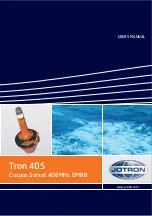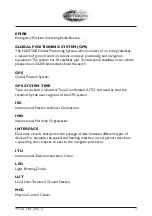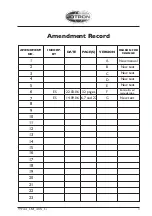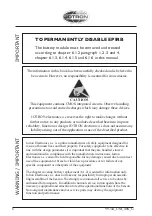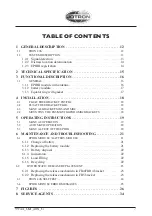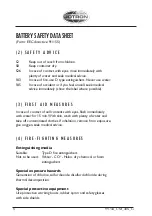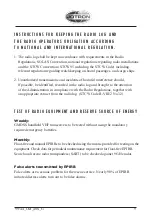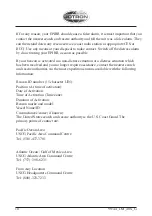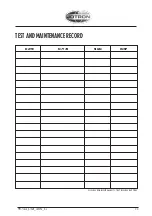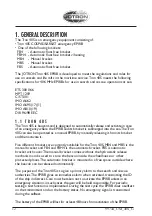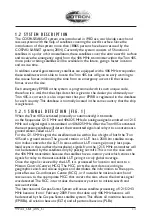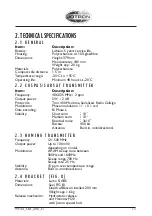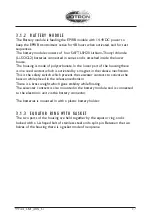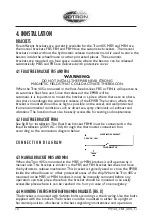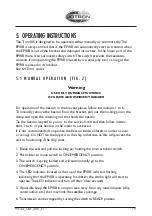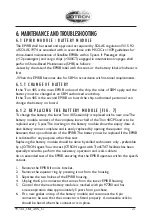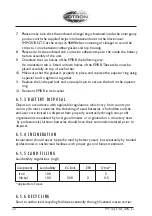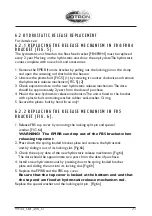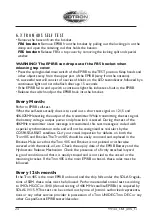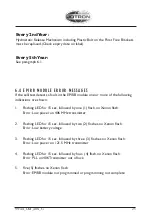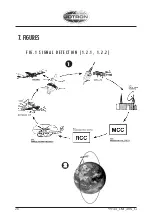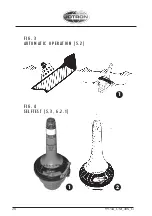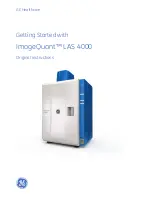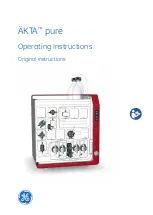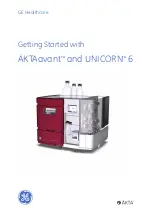
99744_UM_40S_G
1 . 2 . 2 D I S T R E S S L O C A T I O N D E T E R M I N A T I O N [ F I G . 1 ]
The location of the distress signal is determined by taking measurements of the
doppler shift of the EPIRB frequency when the satellite first approach and then pass
the EPIRB.
The actual frequency is heard at the time of closest approach (TCA). Knowing the
position of the satellite and using the received doppler signal information, it is
possible to determine the location of the Tron 40S from the satellite at the TCA.At
the LUT, actually two positions are calculated. One is the actual position (A) and the
other is the mirror image (B) position.A second satellite pass confirms the correct
location (A).With the 406 system the real solution can be determined on the first
pass with a reliability of nearly 90% and down to an accuracy of less than 5 km (3.1
miles).
1 . 2 . 3 E P I R B R E G I S T R A T I O N
Normally the MCC will contact the vessel or the contact person registered in a ship-
ping register and/or an EPIRB register (Ships owner, family member etc.) before aler-
ting the RCC.This is to determine if the alarm from the EPIRB for some reason is a
false alarm, and an expensive rescue operation can be avoided. Because of this it is
important that the ships data is correct in the shipping register or in the EPIRB data-
base.
Tron 40S purchased in some countries will have a registration form attached to it, it is
important that this registration form is completed by the owner and returned to the
place the EPIRB was purchased or to the address specified on the registration form.
Other countries use the already available shipping register to obtain the necessary
information for a vessel in distress, in these countries the ship is already registered
and no registration form is necessary, however it is vital that the coding of the Tron
40S is kept up to date with datas on the ship (nationality, call sign, etc.), to minimise
the time from an alarm to the start of the search and rescue operation.
Reprogramming the Tron 40S can be done at authorised JOTRON agents in more
than 180 different places throughout the world.
If you are a resident of the United States, you must register this beacon with the
National Oceanic and Atmospheric Administration (NOAA) using the registration
card included with the unit. Fill out the form and send it to:
SARSAT Beacon Registry, NOAA-SARSAT, E/SP3, FB4, Room 3320, 5200 Auth Road,
Suitland, MD 20746-4304
Vessel owners shall advise NOAA in writing upon change of vessel or EPIRB
ownership.Transfer of EPIRB to another vessel, or any other change in registration
information, NOAA will provide registrants with proof of registration and change of
registration postcards.
14

